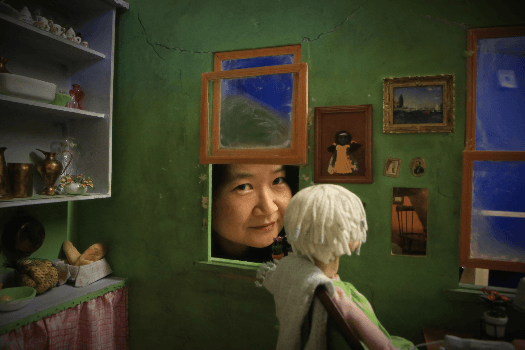Creator Spotlight with Stop-Motion Animator Yoo Lee

This week we would like to introduce you to fashion designer turned stop-motion animator, Yoo Lee.
What was the inspiration behind becoming a creator? What do you enjoy most about the creative process?
I was a kid who was always into arts. I was constantly drawing and crafting something with my hands. At the age of 10, I went to the Metropolitan Museum of Arts with my parents and saw gowns made by Yves Saint Laurent, Dior and Vionnet. I was completely blown away. I became a fashion designer and had my own fashion company.
My creative interest shifted from fashion to animation when I became a mother. Wanting to make a lullaby music video for my daughter, I made a stop motion music video with the help of my good friends and I was completely hooked. In my opinion, stop motion is a most demanding art form mentally and physically and for some reason, this demanding art form ticked off all the right marks in my brain.
As an independent filmmaker, I really enjoy writing the scripts and having the narrative stories come alive through world building through fabrication and character performance. And there is nothing like holding the animation in your hands.
Can you talk through your creative process? How long does it take? Does everything you produce make money?
I first start with writing. After coming up with the logline, I start outlining the story and work on the screenplay. I am someone who constantly revises the script. It’s not uncommon for me to revise the script 12+ times.
I spend a lot of time researching references for world building. I gather a trove of picture references and music to get the tone of the piece I will be working on. Then I start drawing key frames from the script and sketching out the world background and the character designs. Then moving onto the animatics, I start laying out the story there with all the sound to help with the pacing of the story.
Once the set and the puppets are built, I replace all the key frames from the actual test shots with the light design and once I am satisfied, I start the animation. This process can be anywhere between 5 months to a year for a short. I am currently working on a six minute short through Project Involve Laika Grant, which will take me eight months to complete.
And no, not everything I produce makes money, but every piece elevates my skill as a storyteller and opens the doors to other possibilities.
When did you first become aware of copyright, and why?
This was more problematic when I owned my own fashion line. I did copyright the brand, but I didn’t file for worldwide rights at the time due to the financial burden. Sure enough, my brand did pop up in Asia with the images stolen from the website. I only found out when my clients contacted me complaining about the poor quality having purchased the counterfeit on different sites trying to exchange the counterfeits.
Have you experienced copyright infringement and, if so, how has it affected you personally and financially?
Yes, I experienced it while working in the fashion industry. And every copyright infringement felt like a personal violation that chips away your passion. It upsets you, makes you feel hopeless and you try to fight it but as soon as you shut down one site that has violated your intellectual property, two or more pop up. It can be a losing fight, sort of like whack a mole.
Those experiences drained my energy and, in hindsight, contributed to my falling out of love with the fashion industry and my finding solace in animation—especially because those in the fashion industry take designs from other collections, literally, very often.
With animation, I started to spend money to get the original score, to copyright the song that’s embedded in my shorts and to protect releasing it through websites to protect the content when it gets uploaded onto streaming platforms without my consent or knowledge.
What is your biggest copyright-related challenge?
The difficulty of protecting a copyright worldwide, and the cost it requires to do so, are such a burden because protecting your copyrighted work against unauthorized use in a particular country depends on the national laws of that country. Also, trying to find a lawyer or a firm to represent you takes effort both mentally and financially.
Are you one of our Individual Creator Members? Participate in our Creator Spotlight series! Please email us at cawebsite@copyrightalliance.org. And if you aren’t already a member of the Alliance, you can join today by completing our Individual Creator Members membership form!

